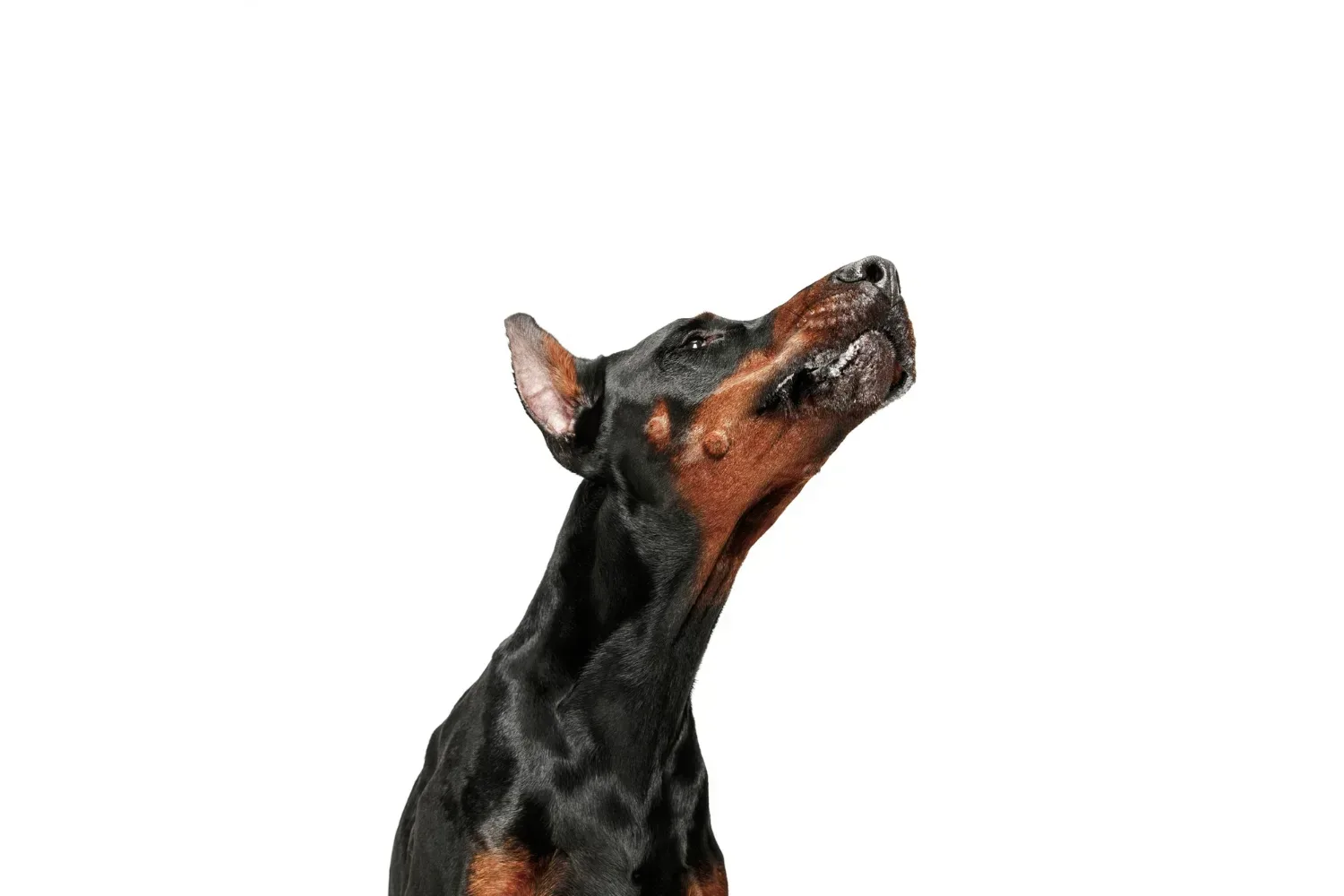
Doberman pinscher ears – all about
Doberman pinscher ears are somewhat like those of wild dogs. They are quite temperamental and prone to ear infections. In the United States, ear cropping is a common cosmetic surgery performed under general anesthesia. Generally, breeders perform this procedure when the puppies are still in their care. While it is not a popular procedure in other countries, it is common in the United States.
Doberman pinscher ears are reminiscent of wild dogs
Doberman pinscher ears are naturally upright. However, some people have chosen to crop them to give them a more natural appearance. While cropping ears is popular for aesthetic reasons, there are no known medical benefits to cropping an animal’s ears. Although ear cropping is done for aesthetic reasons, more owners are questioning whether this procedure is necessary. In this article, we will discuss the pros and cons of cropping an animal’s ears.
Although most contact with the press will be through telephone, you can also contact animal behaviourists and dog trainers in your community. Their expertise is widely respected and believable, and they are not tied to a specific breed. It is a good idea to appoint two people to answer media questions. If possible, make sure these people are trained to respond to the press. It is always better to have someone who has experience in answering questions from the press than a person who has never answered one before.
When purchasing a Doberman, it is important to consider your dog’s health before purchasing one. The ears can break easily and bleed heavily. Aside from being painful and unsightly, ears can cause infections, which can be very costly. Also, a dog’s tail is thinner, which makes it prone to pain. The tail may be docked to protect your dog from a future injury.
In addition to their floppy ears, Dobermans have a long and distinguished history as a working dog. Originally created as a tax collector, the Doberman has since served in war, Search and Rescue, as a companion animal, and even as a therapy dog. These dogs are extremely versatile, and their innate resemblance to wild dogs is a huge plus. However, they are also susceptible to ear infections and must be carefully cleaned every day.
They are susceptible to ear infections
If you’ve ever owned a Doberman pinscher, you know how susceptible they can be to ear infections. The ear leather is very heavy, which traps moisture and makes your dog more likely to get an ear infection. Cropped ears are easier to keep clean and will be less likely to develop a hematoma, a blood-filled pocket inside the ear leather that requires surgery to repair. If your dog constantly shakes their head, ear infections may occur.
Another health concern of Doberman Pinschers is pemphigus foliaceus, a disease of the skin that often causes crusts and hair loss. It is also very common in Albino dogs, which puts a great deal of strain on the joints. Fortunately, there are many treatments available for pemphigus foliaceus, including medication and dietary supplements.
While most dogs can suffer from ear infections, some breeds are more prone than others. Doberman pinschers are especially prone to infection due to allergies, as well as skin irritants. Water in the ear can cause bacteria to grow, which can lead to a secondary infection. Excess hair around the ear opening can also transport irritants, bacteria, and parasites.
Some of the signs of ear infection in a Doberman pinscher are head shaking, scratching, and rubbing. A discharge of pus and wax may also occur from the ears. Some cases may result in a foul odor or hair loss. Other signs of ear infection include loss of balance and eye movements that are abnormal. The best way to determine whether your dog is suffering from an ear infection is to have a thorough exam.
They are temperamental
Doberman pinscher ears are characteristically large and floppy. The dogs are known to be temperamental, but their temperament is not the reason why many owners choose them as pets. Dobermans are often bred for their appearance and for their protective abilities. The short, dense coat and cropped ears of this breed are a testament to this fact. Ears are also historically very functional, but modern day owners can opt for more stylish and sleek versions.
Some breeders believe that cropped ears are better for protection and for looks. In fact, this surgical procedure is not only risky for your pet but also causes infections. Ear cropping is a common procedure in many breeds, and the procedure has agricultural roots. In addition to improving a dog’s appearance, it can also improve the dog’s hearing, which is a valuable trait in a protection dog.
While some breeders have removed the floppy ears of their pups, others prefer them to be naturally floppy. Ear cropping in a Doberman pinscher is a medical procedure, and the healing time is long. It can help your puppy avoid illness and improve their looks. In addition to helping your dog, ear cropping is also an option to correct a dog’s ears that may be causing your pup pain.
However, ear cropping comes with risks. It involves surgery whereby a veterinarian removes a portion of the dog’s ear. Unlike ear surgery, this procedure is not an amputation, but instead a reconstructive procedure. After the surgery, the ears will remain like this for several weeks. The ears will remain this way for a few weeks. A few weeks after the surgery, owners should avoid disturbing the surgical site.
They are prone to hip dysplasia
While Doberman Pinschers are known for their loving personalities, they are also susceptible to certain medical conditions. One of these is hypothyroidism, which is when the thyroid gland fails to produce enough thyroid hormone. Symptoms of hypothyroidism can be weight gain, dry skin, and susceptibility to other skin diseases. In severe cases, these dogs can become weak and collapse. A yearly blood test and dietary supplementation are required to diagnose the disease.
Hip dysplasia is a hereditary condition that causes the head of the femur bone to fit incorrectly into the hip socket. A veterinarian may perform an x-ray test to diagnose the condition, which will reveal if your dog has this problem. In some cases, the symptoms of this disease are obvious, while others may go undetected until the dog has already died. As a result, you should avoid breeding a dog with this condition.
A genetic disease in Doberman pinschers called Wobbler’s Syndrome is the most common cause of this condition. This genetic disease affects the hip joints and may result in painful neck and leg paralysis. Surgery is available to treat this condition, but it is not always effective and patients are at risk for recurrence. It is important to consult a veterinarian before allowing your Doberman pinscher to undergo surgery.
Disc disease is another common cause of a dog’s pain and disability. This condition is more common in large breeds and is most common in Doberman pinschers. Proper nutrition and exercise can decrease the risk of bone and joint problems. Moreover, obesity puts strain on the joints, so overweight pets are prone to hip dysplasia. The best way to avoid this is to keep your dog healthy and active.
They are prone to canine compulsive disorder
Dogs with CCD engage in repetitive behaviors, such as chewing, licking, or sucking, that interfere with their daily lives. These behaviors are usually harmless and are often innocuous, though some breeds may suffer from them. A common example of CCD in Doberman pinschers is sucking or licking the flank area, where the rear legs meet the torso.
Research into the underlying causes of compulsive behavior in dogs has shown that breeds with high-strung temperaments are more likely to develop the disorder. These breeds are often herding or sporting, and therefore are more susceptible to developing compulsive behaviors. If you notice any of these behaviors in your dog, consider treating him or her with medications that reduce or stop their behavior.
One symptom of CCD in Doberman pinschers is a fear of humans. They may also pace around near people, which can be a warning sign of a fearful, suspicious, or aggressive dog. In most cases, this behavior is focused on strangers and not toward family members. Unlike dogs with human obsessive-compulsive disorder, however, Doberman pinschers do not simply bite or snap at anyone out of the blue. They generally display warning signs before they become aggressive.
Surgical ear cropping is not always safe or necessary for Dobermans. It can cause infections, result in poor looks, and require additional surgeries. Ear cropping is not a mandatory procedure for Dobermans and is a controversial topic. Even in countries where ear cropping is still legal, it is still frowned upon in many areas. While it may seem harmless, it is also illegal.


